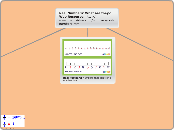Master Addition and Subtraction with Fractions
The goal of this map is to provide a guide for students and parents to use while at home looking at homework. This map should help them understand understand and practice the addition and subtraction of fractions.
Objectives:
*Students should be able to add and subtract fractions with common denominators.
*Students should be able to add and subtract fractions with unlike (arbitrary) denominators.
*Students should be able to add and subtract mixed numbers.
SUBTRACTING FRACTIONS
1. Change (convert) mixed numbers into improper fractions. Do this by multiplying the whole number by the denominator and then adding the numerator to get the final numerator of the improper fraction. Keep the original denominator as the final denominator.
2. Make denominators the same by multiplying top and and bottom by the same number to make the fractions' denominators match. Reminder: Denominator is the bottom number.
3. Start subtracting the numerators first. Then put that number on top of the denominator that was the same between the two fractions.
4. The last step would be to simplify. This is reducing the numerator and denominator by the same amount with division.
1. Make denominators the same by multiplying top and and bottom by the same number to make the fractions' denominators match. Reminder: Denominator is the bottom number.
2. Start subtracting the numerators first. Then put that number on top of the denominator that was the same between the two fractions.
3. The last step would be to simplify. This is reducing the numerator and denominator by the same amount with division.
1. Start subtracting the numerators first. Then put that number on top of the denominator that was the same between the two fractions.
2. The last step would be to simplify. This is reducing the numerator and denominator by the same amount with division.
ADDING FRACTIONS
Mixed Numbers
1. Change (convert) mixed numbers into improper fractions. Do this by multiplying the whole number by the denominator and then adding the numerator to get the final numerator of the improper fraction. Keep the original denominator as the final denominator.
2. Start adding the numerators first. Then put that number on top of the denominator that was the same between the two fractions.
3. The last step would be to simplify. This is reducing the numerator and denominator by the same amount with division.
Different Denominators
1. Make denominators the same by multiplying top and and bottom by the same number to make the fractions' denominators match. Reminder: Denominator is the bottom number.
2. Start adding the numerators first. Then put that number on top of the denominator that was the same between the two fractions.
3. The last step would be to simplify. This is reducing the numerator and denominator by the same amount with division.
Common Denominators
Pointers
1.Start adding the numerators first. Then put that number on top of the denominator that was the same between the two fractions. Reminder: The top number is the numerator.
2. The last step would be to simplify. This is reducing the numerator and denominator by the same amount with division.
See It In Action
Time To Practice!









